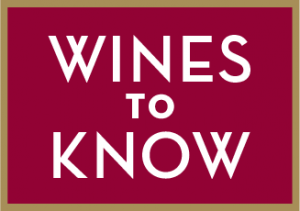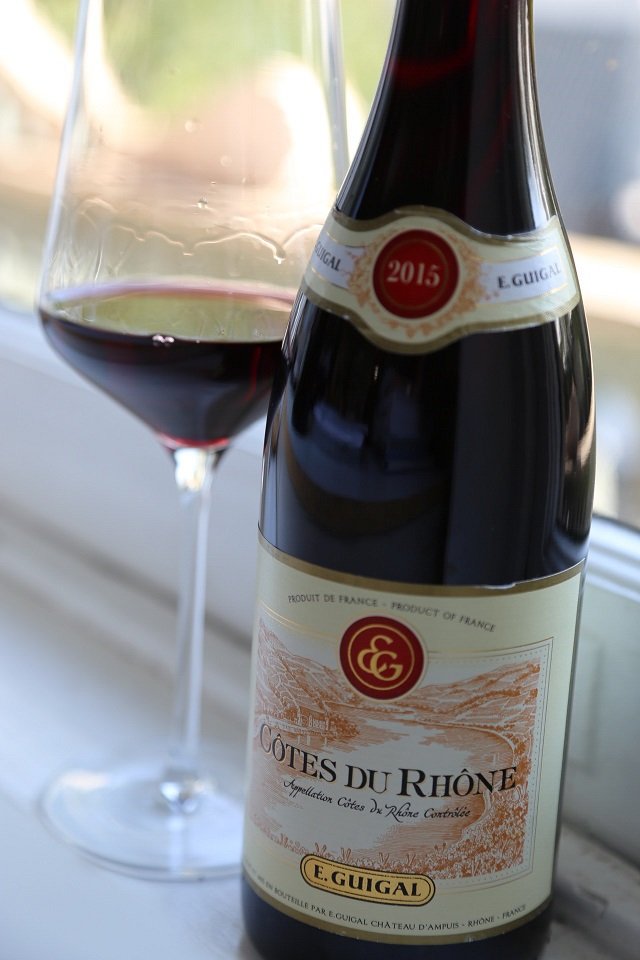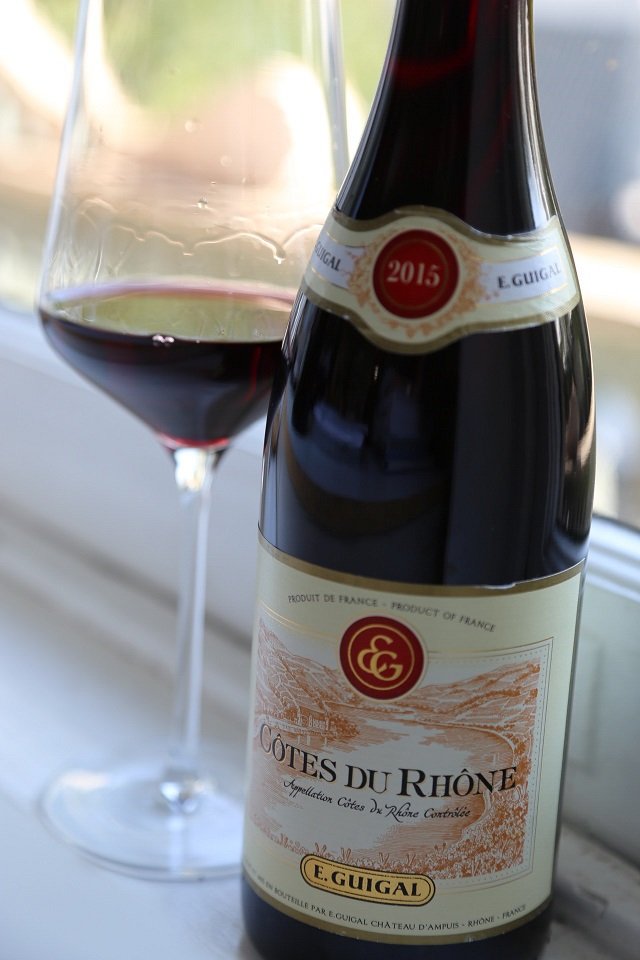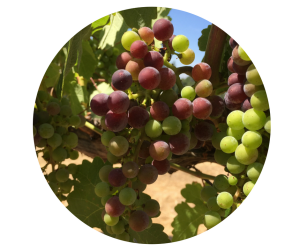
E. GUIGAL | Côtes-du-Rhône 2015
(Rhône Valley, France) $16
 Tasting this, I had the sudden sensation that a sexy guy from Texas just walked into the room. Cowboy boots, leather jacket, 5 o’clock shadow. I could still smell the campfire. (Is this profiling?) Guigal, of course, is one of the Rhône’s most traditional and respected producers. These days, there’s a lot of insipid Côtes-du-Rhône out there, but this dynamo (syrah, grenache, mourvèdre) isn’t one of them. If you love the meaty, gamey, spicy flavors of Rhône reds, this steal is for you. (14% abv)
Tasting this, I had the sudden sensation that a sexy guy from Texas just walked into the room. Cowboy boots, leather jacket, 5 o’clock shadow. I could still smell the campfire. (Is this profiling?) Guigal, of course, is one of the Rhône’s most traditional and respected producers. These days, there’s a lot of insipid Côtes-du-Rhône out there, but this dynamo (syrah, grenache, mourvèdre) isn’t one of them. If you love the meaty, gamey, spicy flavors of Rhône reds, this steal is for you. (14% abv)
90 points KM

DRINKING THE LEAST BAD WINE
DESPERATE TIMES CALL FOR DESPERATE DRINKING
A Guest Blog
by Kelli White
Note from Karen: My friend Kelli White is a sommelier and author. Her book “Napa Valley, Then & Now” is one of the definitive texts on Napa Valley wines. Recently Kelli and I were judges at the Decanter World Wine Awards in London and she told me her strategy for drinking bad wine. It’s hilarious and helpful. Here it is, straight from Kelli herself.

In the past decade, I ripened from a 20-something to a 30-something, during which time I traveled extensively for work and moonlighted as a semi-professional wedding guest. Between all those hours clocked in coach and bouncing about to Beyoncé’s Continue Reading…

Which South American wine-producing region called “the land of good sunshine and good wine” is known for having almost no rain?
A. Casablanca Valley, Chile
B. Mendoza, Argentina
C. Colchagua Valley, Chile
D. Serra Gaúcha, Brazil

The first country to understand that grapes covered with the mold Botrytis cinerea could lead to marvelous wines was Germany.
Answer: False. While there are four countries—Germany, France, Austria, and Hungary—that are famous for their botrytized wines, there is just one nation that first realized the mold’s true wine-making potential: Hungary. As of the early 17th century, the Tokaji Aszú wines of Hungary’s Tokaj-Hegyalja region were well-established luxuries. And, although it is not clear if Austria adopted the technique from Hungary, the part of Austria famous for botrytized wines—Burgenland—borders Hungary, and indeed was once part of the vast Austro-Hungarian Empire. Meanwhile, Germany made their first botrytized wine in 1775, Bordeaux in the mid-1800s.

It’s Ba-a-a-a-ck
- In a large pot, cook SPAM with lard to render the fat
- Extract the fat and add to dark rum in a plastic bag
- Place plastic bag in freezer until it’s solid
- Take the slushy SPAM/rum concoction and pour through a strainer to separate the fat—now you have SPAM-infused rum!
- Mix approximately 2 ounces of the SPAM-infused rum, orgeat syrup, pineapple juice, lime, and bitters, and mix in cocktail shaker
- Serve in a traditional SPAM can, and top with shaved ice
- Never forgive yourself for drinking this
- Or, disdain the critics. SPAMness could be positive and maybe worth getting in touch with
- By the way, why ARE unwanted emails called SPAM?
![]()
Veraison
Veraison (ver-AY-zhun) is happening right now all over California. It’s the time in a vine’s growing cycle when grape berries begin to soften and change color. “White” grapes go from green to yellowish, and red grapes go from green to dark red or purple. Veraison is important to winemakers because it signals the onset of final ripening before harvest.


The Indescribability of Albariño
Albariño (al-bar-EEN-yo) is the great white grape of Rías Baixas in the province of Galicia in northwestern Spain. Albariños are light, snappy, dry white wines with terrific crispness. They aren’t full-bodied like most chardonnays, they aren’t green like a lot of sauvignon blancs, and they aren’tas fruity as rieslings can be. Rather, albariños have their own clean, fresh character with just a hint of peaches or almonds. Because fishing is the major industry in Galicia, it comes as no surprise that albariños are made with seafood in mind. Throw some shrimp on the grill, open a bottle, and you’ll see just what we mean.

“Dear Karen, you’ve written that, “The vintage date always refers to the year the grapes were grown and harvested.” But what if a winery is making an ice wine or eiswein and harvests the grapes in January of the following year?” —Roger C., Cheshire, CT
Roger—great question. You are right, ice wine or eiswein (made from grapes frozen naturally on the vine) is sometimes harvested in January. But when it is, the wine’s vintage date will nonetheless be the preceding year. According to my friend Johannes Selbach, proprietor of Selbach-Oster in the Mosel region of Germany, the “growing year counts, not the actual harvest date.” Eiswein from a great producer, by the way, just might be the most ravishing sweet wine in existence.
Send your questions/comments to [email protected].









